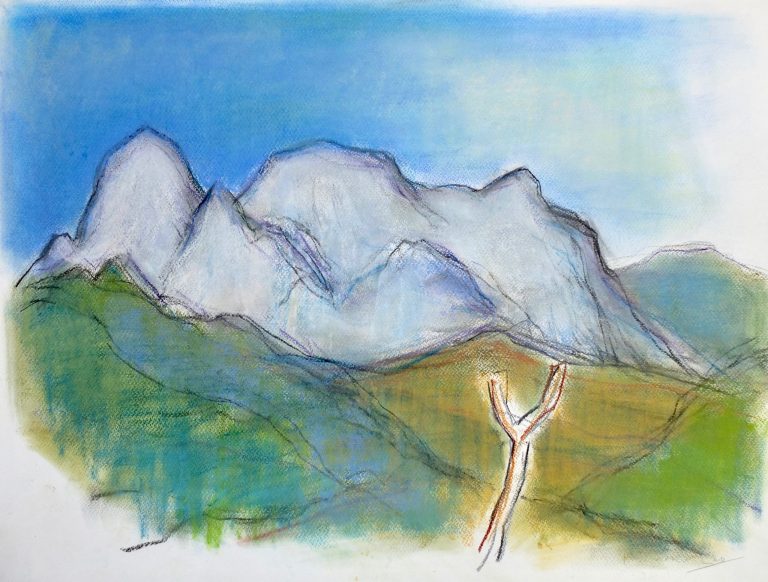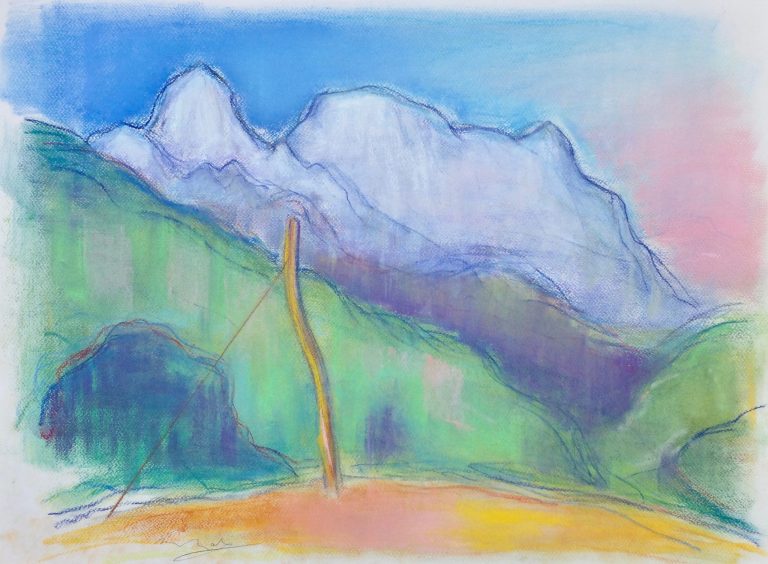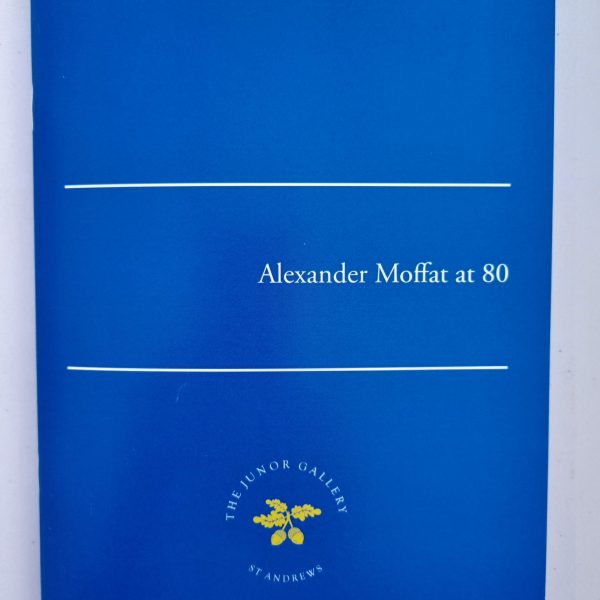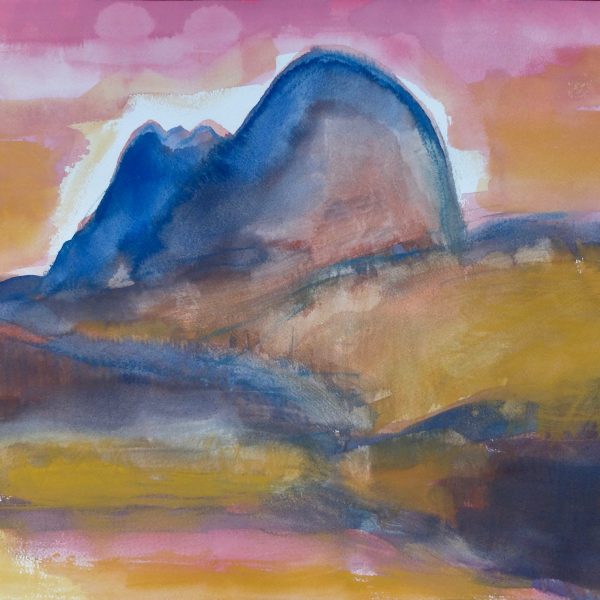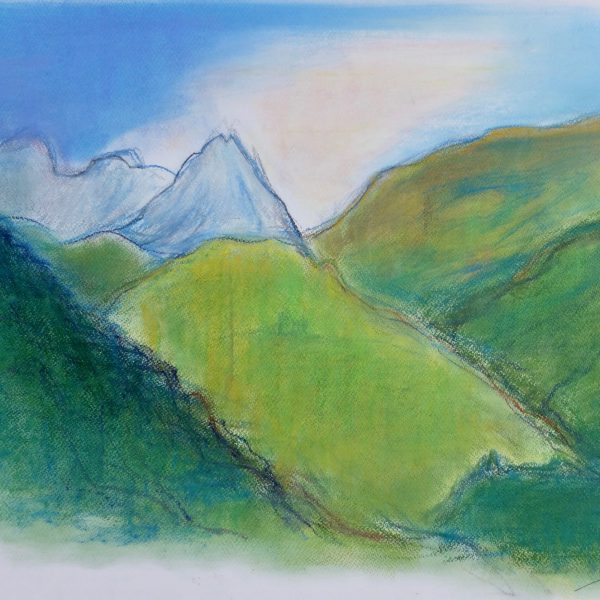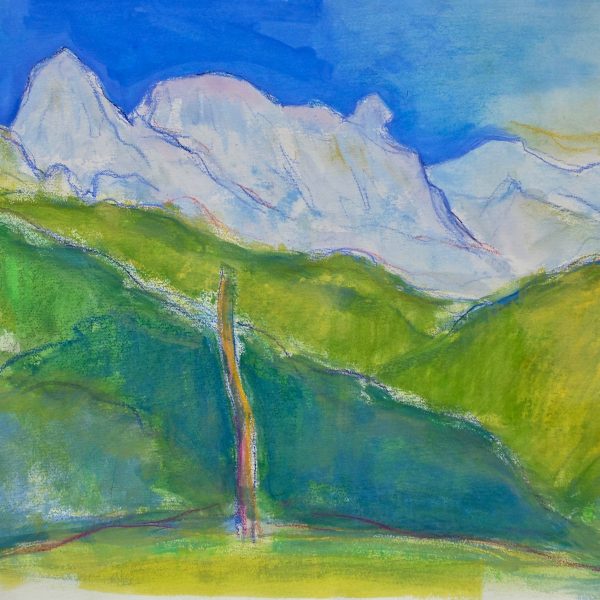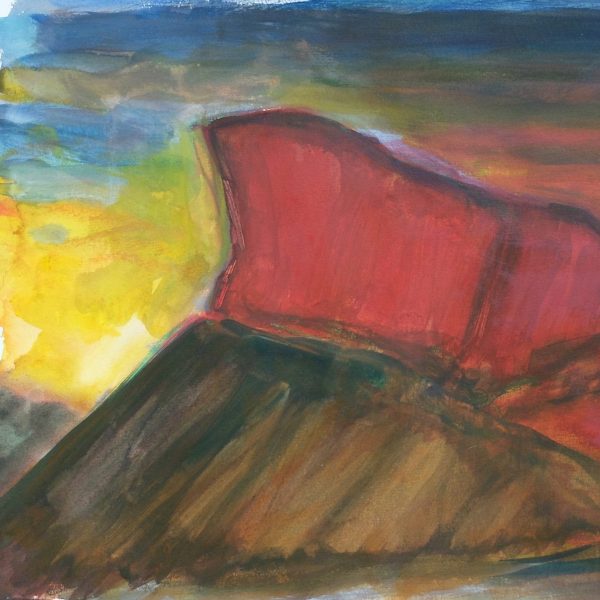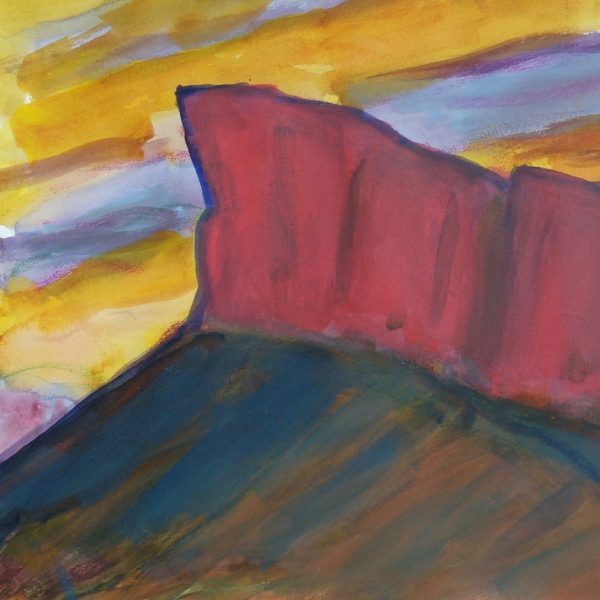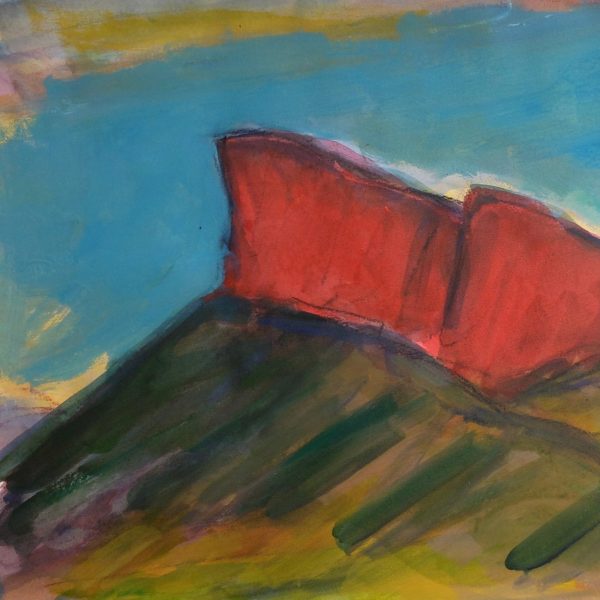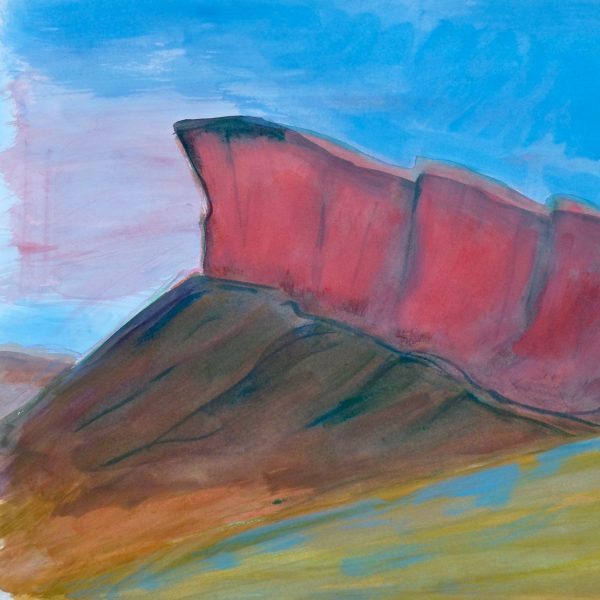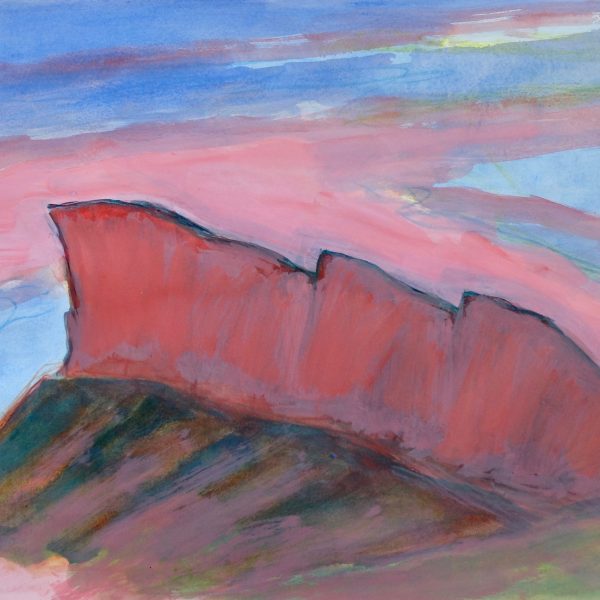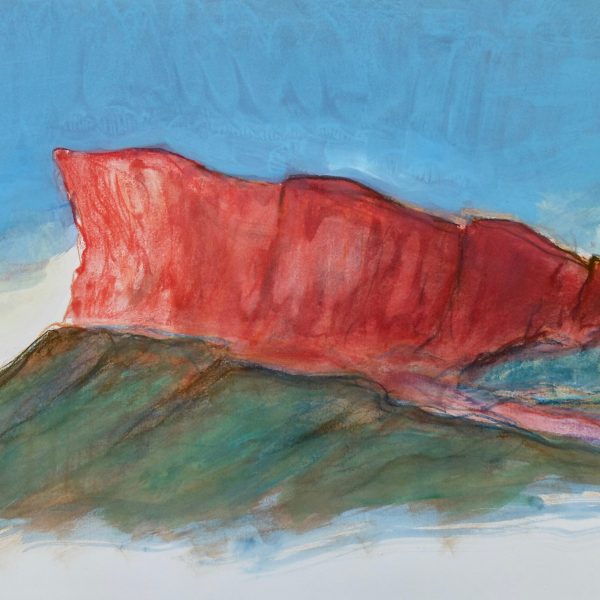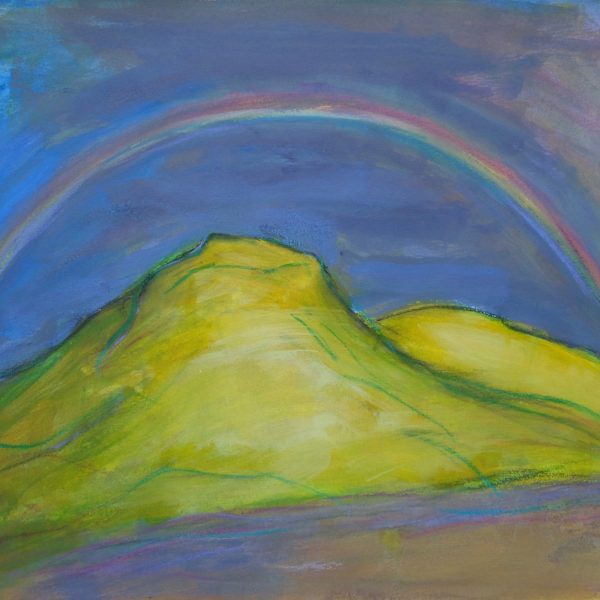Pastel on paper
From a series of 20 studies (2018-20)
‘The landscapes, or landmarks I‘m attracted to usually have some kind of emblematic potential…from my studio window I can see Arthur’s Seat, Salisbury Crags, Calton Hill. The crags and rocks of Edinburgh speak of history and therefore confer identity….In Sutherland, Suilven…and in Italy, the Apuan Alps. These are perhaps my most pure landscapes…they don’t need people. And it is possible to make a landscape painting that carries additional meaning, as Poussin and Caspar David Friedrich demonstrated.’ – Alexander Moffat
The viewer’s eye is inexorably drawn to the vertical in the foreground. In all of the landscapes by this renowned portraitist, people are now conspicuous by their absence. That is, each landscape is a vision of ‘the bigger picture,’ in our life experience. The portraits depict lives often all too fleeting; the landscapes address the timeless solidity of nature. The landscapes are large sweeps of an environment from a distant viewpoint, in sharp contrast to the intimately detailed environments in which he placed his sitters for portraits.
In only five of the Apuan Alps series, this tree stands alone, intrudes, even – a sole detail deliberately singled out by the artist for our attention. Neither is it a lush olive, walnut or chestnut tree of the region. It’s not even possible to identify a singular characteristic since it appears to be in its last stage of life and separated now from its grove or even once dense forest. In another version in which this stark vertical appears (Apuan Alps III), it is supported by such a straight line going out at a 45 degree angle from the trunk the viewer can only interpret this as a man-made support for the ailing tree and furthermore that the tree was venerated by local people and deemed worth saving for as long as possible.
The branches are upturned, as if pointing toward the mountain peaks or sky. The viewer’s eye follows. What is the intended meaning of this deliberate insertion? I’m certain there are clues in the artist’s own words and in the fact there’s a symbolic meaning to the personal objects in his portraiture. I’m not here to provide answers – I have my own interpretation as will you. I can say: here’s a painting with which it’s worth your spending some time, for it is liminal, as ultimately mysterious as all good art.
Beth Junor, Gallery Director

